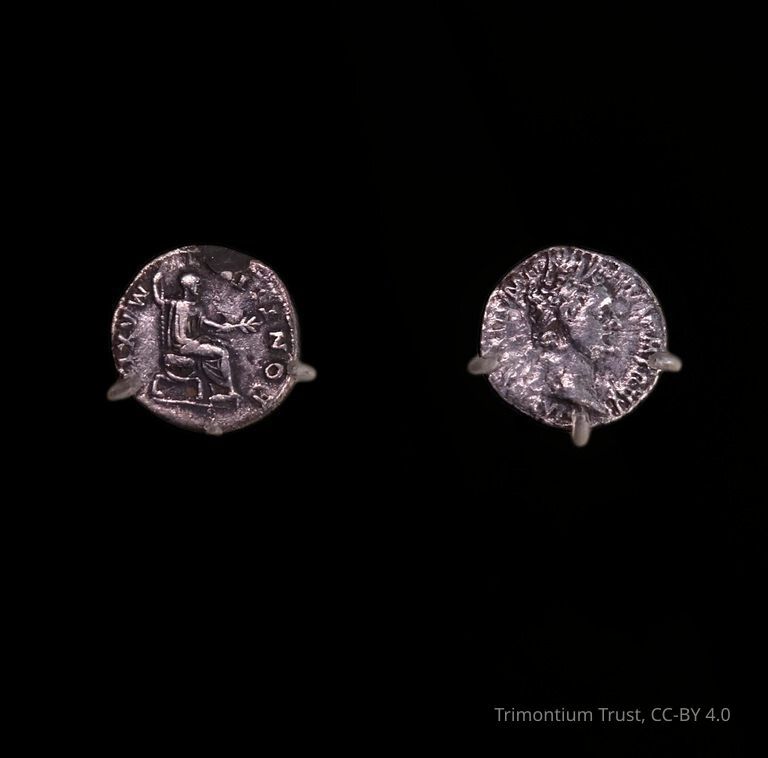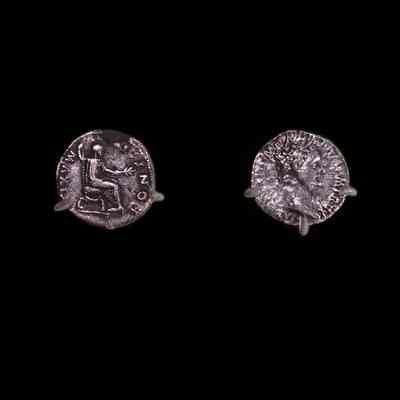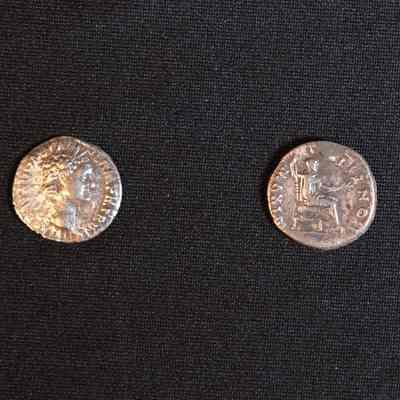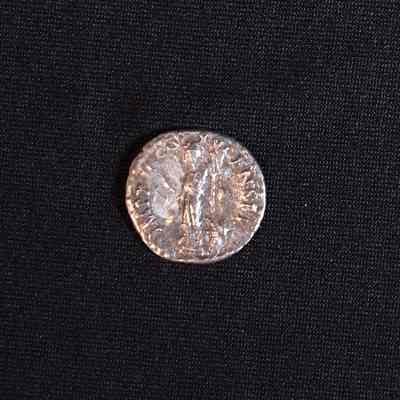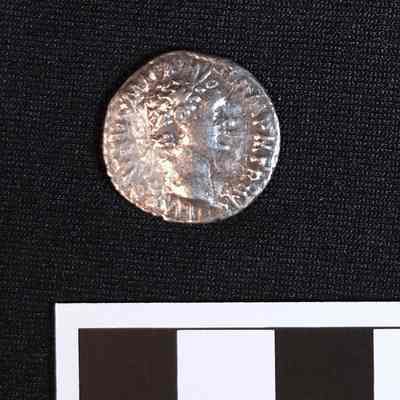Coins
Name/Title
CoinsEntry/Object ID
E.2023.12Description
Two Roman coins found at Old Melrose. Denarius of Vespasian, 73AD - reverse Pontif Maxim-. Denarius of Domitian - reverse Minerva-.Use
Used to buy goodsContext
Found at Old Melrose by TrusteeCollection
Trimontium TrustCategory
Coin
Numismatics
Mintage
Time Period
1st century ADCoin Details
Obverse
Description
Vespasian. Laureate head right. IMP CAES VESP AVG CENSTranscription
IMP CAES VESP AVG CENSReverse
Description
PONTIF MAXIM Vespasianus seated right on a curule chair, with sceptre in right hand and branch in left (RIC 546)Transcription
PONTIF MAXIMCurrency
DenariusEthnography
Cultural Region
Continent
EuropeCulture/Tribe
Roman
